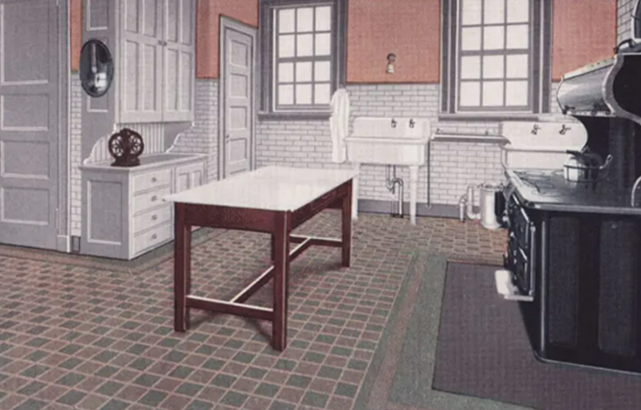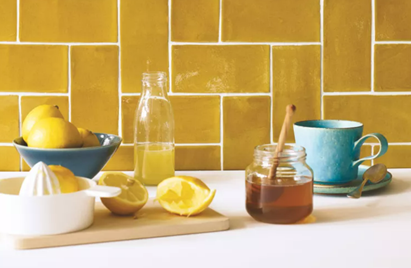SUBWAY TILES (AND A SECRET)
SUBWAY TILES (AND A SECRET)
As everyone who has had contact with us here at STS would know, we don’t deal in actual Tiles themselves.
We are the company that constantly strives to provide the ultimate in quality and ease of use in products that facilitate the best practice in tiling so that the professional or DIY tiler alike can tile away to their heart’s content and have complete confidence in a tile backing and enhancement system that is backed by a lifetime guarantee!
However, we are passionate, fanatical even, about all things Tiling and everything that’s going on in the Tile World.
Likewise, we have a very keen interest in the fascinating and colourful history of tiles and tiling.
To kick off an occasional series of blogs relating to Tiles, their history, development, new trends and innovations, etc. we are beginning with a column on Subway Tiles!
Subway Tiles (also known as Metro Tiles) are extremely popular.
Originally only available in White, this ubiquitous product now comes in a dizzying array of styles and colours that are an ideal complement to a vast range of décor options.
This most versatile tile, three inches by six inches in size was specifically invented for installation in the New York Subway Train network that opened in the early 1900s, hence the name.
Designed by Architects George Lewis Heins and Christopher Grant Lafarge, the original line opened on October 27th, 1904, and its showpiece station, City Hall, was a masterpiece!
Image: Mike H (Atlas Obscura User)
These gentlemen, partners at Heins & Lafarge Architects wanted their creation to be beautiful as well as functional.
Underground transportation was something completely new to the vast majority of New Yorkers and it was as vital that their experience was as aesthetically pleasing as the transport system was efficient and reliable.
To attain this goal, Vaulted Ceilings, Skylights, and Tile Mosaics were incorporated into the designs of the stations.
Own work, CC BY-SA 4.0,
By Rhododendrites
The extensive installation of this new tile was to prove an inspired and innovative decorative development.
Covering the walls in all the stations and along the route of the railway itself, these simple, white ceramic tiles were the perfect décor for this trailblazing method of travel running beneath the streets of the big apple.
They were bright, and their white reflective surface made the most of the available light in this new-fangled subterranean environment.
They were also clean, and it was easy to maintain this cleanliness!
This factor was of all importance to the city dweller of the Victorian era!
Their valuation of good hygiene and cleanliness was paramount, and the glossy white tile was said to manifest an impression of purity.
This perfect essence of “spic and span” made a deep and lastingly favourable impression on the people who rode the subway for the first time!
Image Credit: Jorg Hackemann
In this way, the Subway Tile became an integral component of, and a large part of the reason for, the Subway transportation system’s subsequent success.
BROADENING APPEAL
By association, the popularity of Subway Tiles took off!
Initially coveted for use in locations where cleanliness was of primary significance (hospitals, kitchens, house bathrooms, food premises), these small tiles’ appeal and application continued to broaden.
It is thought that the Subway Tile enjoyed peak popularity in the 1920’s & 1930’s but in truth, they never really went out of fashion!
Image Credit: Antique home style.
It is now a staple of kitchen and bathroom design, a perennial favourite among homeowners.
As the product has widened in its range of use, so the definition of what constitutes a Subway Tile has also developed.
Manufacturers now commonly apply the term to any rectangular tile twice the length of its width e.g 1 inch by 2-inch mosaics or 4 inch by 8 inch planks (or even 2 inch by eight inch strips that don’t follow the conventional dimension pattern at all).
And of course, they are now available in an eclectic range of colours and finishes and remain hugely in vogue, although the original white version still seems to have retained the top spot in the popularity charts.
Affordable, durable, and easily cleaned these simple-to-install tiles are perfect for creating a design statement and classy finish to your chosen project
The subway tiles’ versatility becomes increasingly obvious as you start to experiment.
DESIGN IDEAS
Below are some design ideas for your delectation.
Shiny black subway tiles laid in a classic offset running bond pattern.
Picture: Lecor Décor
Again, classic offset running bond pattern-cool grey subway.
Picture: Mindy Mayer Design Co
Deep blue tones positioned vertically creating an illusion of height in a small space.
Image: Topps Tiles
Clever use to break up a colour scheme.
Image: Original Style.
Tiles laid in a herringbone pattern, striking a perfect contrast to the bold blue paint.
Image: Walls and Floors
A brightly coloured option-filling the scene with sunny cheer!
Image: Fired Earth
Combining white and grey tones laid in a herringbone design.
Image: Walls & Floors
In whatever style you choose to lay this most adaptable and multifaceted décor enhancing component, make certain you are using it in conjunction with the refined quality products from STS.
From the perfect tile backing board to the decorative embellishment provided by our luxury trim range, allied with the right tools and accessories for the job, STS can provide products, solutions and expertise that you can utilise over and over again.
Make sure the job is perfect, every time, by working with The Ultimate Surface ®
THE SECRET
CITY HALL, the original station, closed in 1945.
For many years it sat in derelict gloom forgotten by all but tile (and train) fanatics.
Amazingly, however, it did maintain its pristine condition despite its abandonment.
Now, here is a secret for you.
Subway Train 6 terminates its journey at the Brooklyn Bridge Station.
It then must move on round a loop (see below) to get itself back on track for the return journey.
This takes it THROUGH City Hall Station.
Image: Wikipedia
Now, it’s not strictly allowed (or even legal) but it does seem that there is a tacit understanding among the railway officials that there is a desire among tile (and station) buffs to get another glimpse at the good old edifice.
Therefore, the announcement that you must exit the train at Brooklyn Bridge is no longer strictly enforced.
You need to act discreetly, but keep a low profile, stay on Train 6, and you will be taken on the loop ride.
If you have chosen a bright sunny day, the light will stream in through the skylights as you enter the City Hall station, illuminating the scene and enabling you to get the best view of this significant tile history time capsule!
If you DO get a chance to do this anytime, be sure to discreetly get a snap or two and send it through to us here at STS so we can feature you in a future blog post!
(STS will NOT accept any responsibility if the train conductor got out of the wrong side of the bed on the morning of your journey and unceremoniously frog marches you off the train in the event of you being discovered)
Image: Wikipedia













